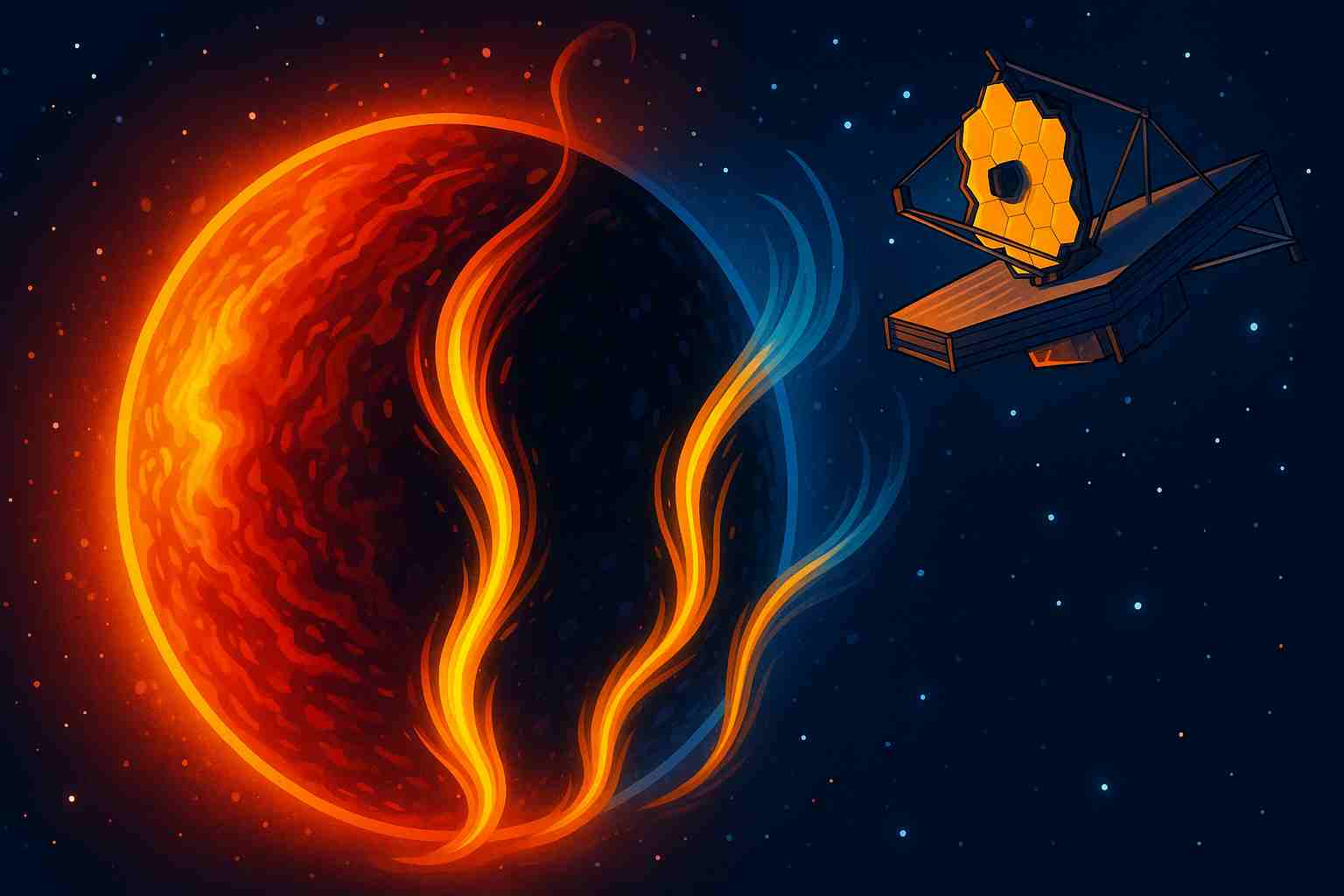
Far, far away from Earth, a strange planet is spinning around its star at blazing speeds and even more blazing temperatures. But something about this ultra-hot world has left scientists scratching their heads…
Meet WASP-121b — a giant, sizzling exoplanet where one side is always facing its star, heating up to over 3,000°C, while the other side remains a cooler 1,500°C. Sounds like a place you’d need heat-proof boots, right? But that’s not the mystery. The real mystery is: Where did this planet come from, and why is there methane on its cold side?
Let’s crack this cosmic case.
🔍 Clue #1: A Superhot Giant Too Close for Comfort
WASP-121b zooms around its star in just 30.5 hours—that’s just over a single Earth day! It’s so close to the star that it should be a total fireball. And on one side, it definitely is. But the planet wasn’t always here…
Using the powerful eyes of the James Webb Space Telescope (JWST), scientists discovered signs that this planet actually formed far away, in the colder parts of its solar system—just like our own Jupiter or Uranus. So how did it end up roasting next to its star?
🔍 Clue #2: Methane Where It Shouldn’t Be
Here’s where things get really weird. The JWST found methane gas on the planet’s dark side. But methane can’t survive in scorching temperatures. Scientists expected to see methane only in cooler planets—not here, not now.
So what gives?
It turns out WASP-121b may have crazy strong vertical winds! Imagine winds so powerful that they suck up methane gas from deep, cooler layers and bring it to the top—like a space elevator made of wind. This is not what scientists expected. It’s as if the planet is hiding a secret ventilation system.
🔍 Clue #3: Vaporized Rocks in the Air
But wait—there’s more. JWST also spotted silicon monoxide in the atmosphere. That’s a gas that comes from rocky materials like quartz. It means that this planet, at some point, gobbled up rocky pebbles and mini-asteroids, then carried their materials all the way to its upper atmosphere—now vaporized by the extreme heat.
So WASP-121b didn’t just collect gas like most giant planets—it swallowed rocky snacks too!
🧩 Putting the Puzzle Together
With water vapor, carbon monoxide, methane, and silicon monoxide all swirling in its skies, WASP-121b is like a time capsule of planetary birth. Scientists now believe it formed far from its star in a cold zone, slowly migrated inward, and along the way gathered unusual materials that now decorate its atmosphere.
And that crazy methane on the nightside? That’s the final twist—proof that planetary atmospheres can be wilder and more active than anyone imagined.
🛸 The Mystery Continues…
This case may be cracked, but new questions have appeared. How many other planets are hiding methane in the dark? Are there more planets that traveled across their solar systems? And could some of them—just maybe—host life?
For now, WASP-121b remains one of the strangest, hottest, and most surprising planets we’ve ever studied. And thanks to the James Webb Space Telescope, more space mysteries are waiting to be discovered.
Stay tuned, young scientists—the universe is full of secrets!






